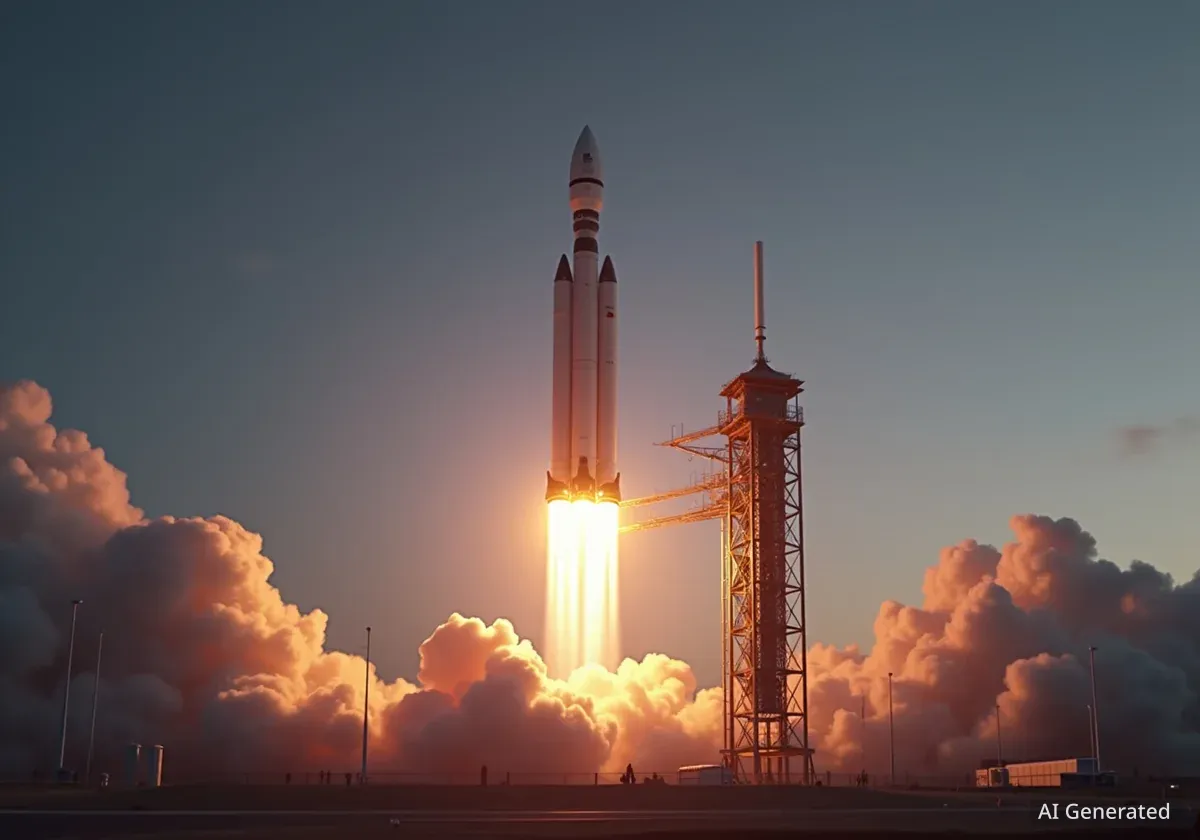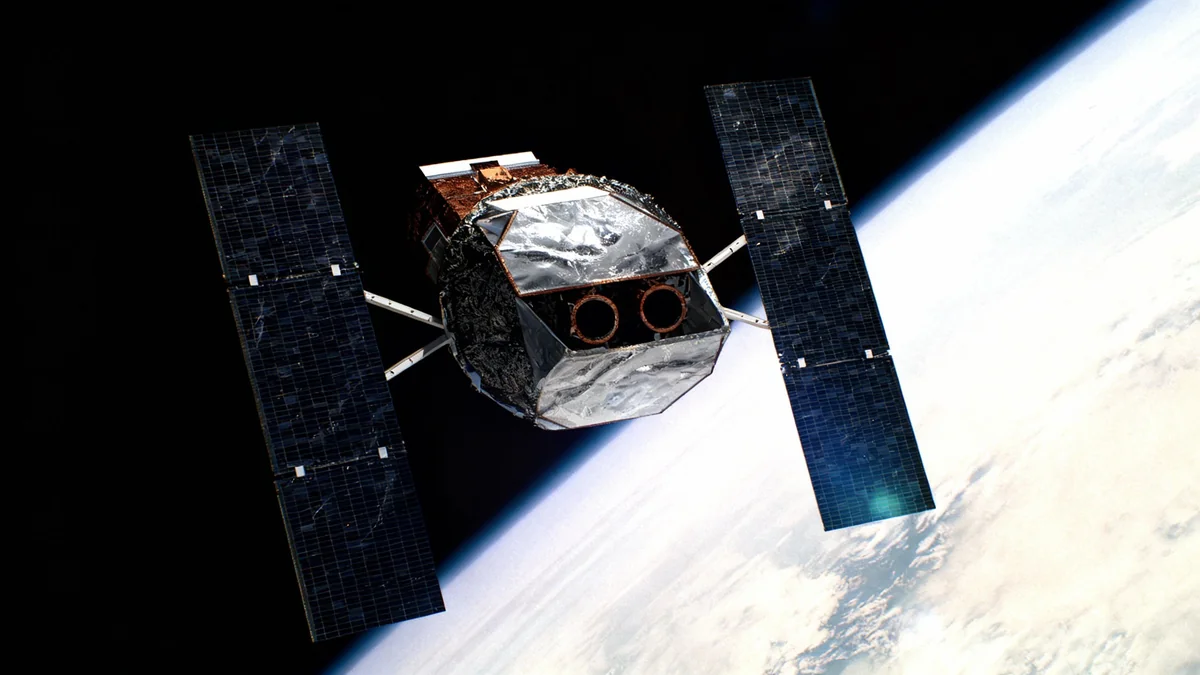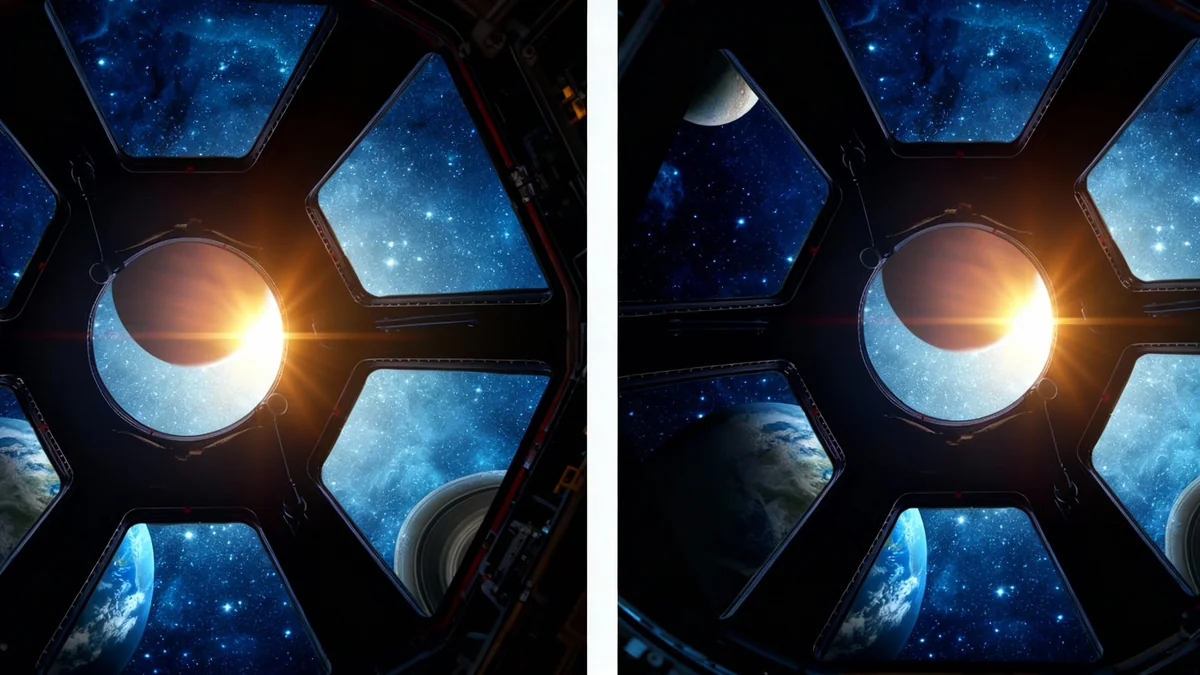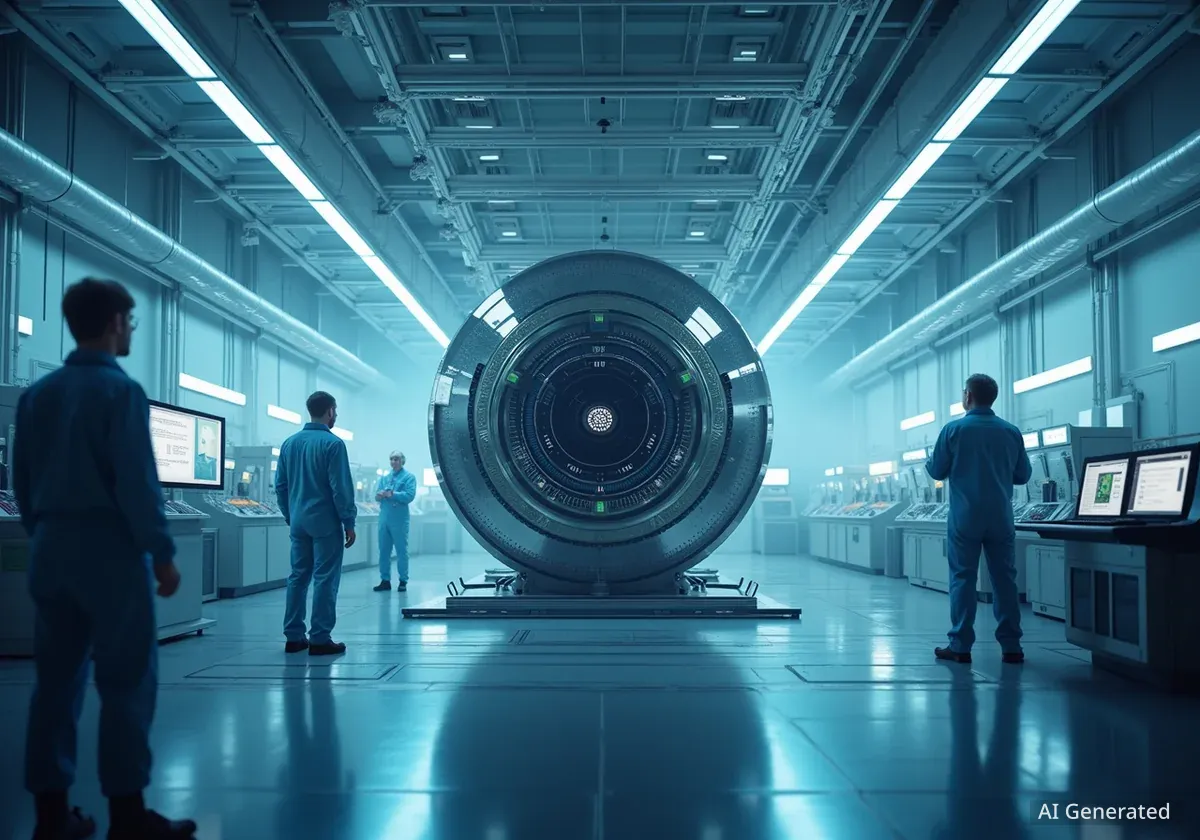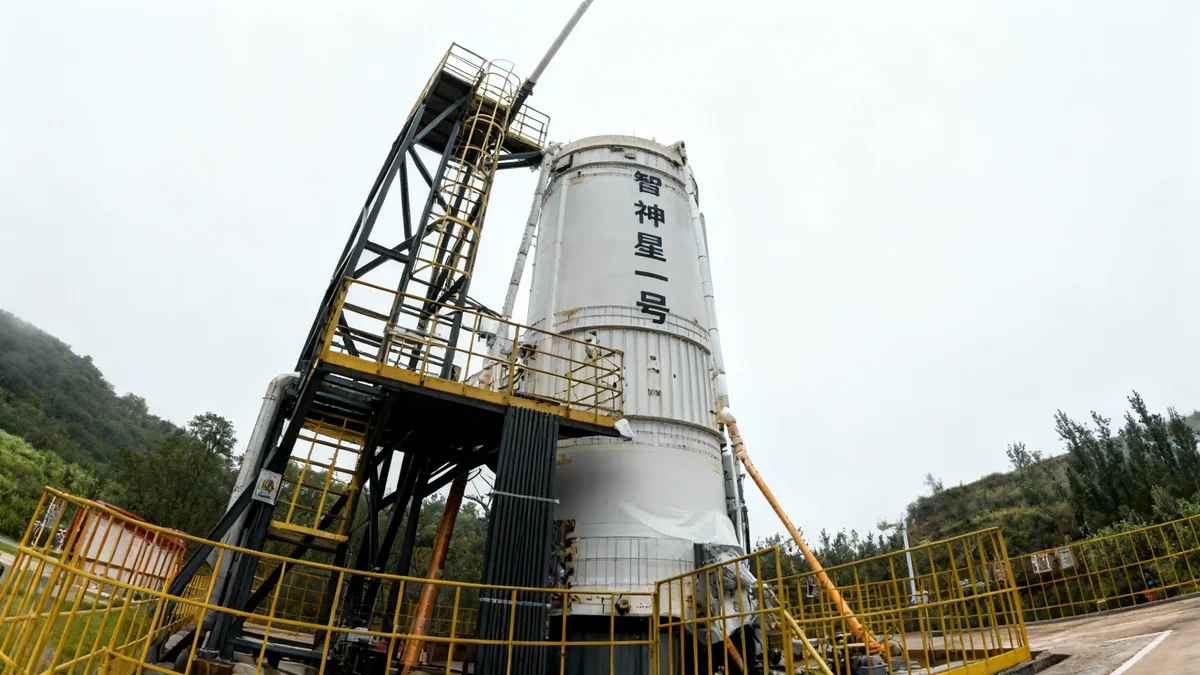The era of commercial space habitation is set to begin with the planned launch of Haven-1, the world's first private space station. Developed by California-based aerospace company Vast, the single-module outpost is scheduled to lift off aboard a SpaceX Falcon 9 rocket as early as May 2026, marking a significant step in opening low Earth orbit to private enterprise and research.
Following its deployment, Haven-1 is designed to host a four-person crew for missions lasting up to 30 days. The first crewed mission, named Vast-1, will also be launched by SpaceX, utilizing a Crew Dragon spacecraft to ferry the astronauts to the new orbital facility.
Key Takeaways
- First Commercial Station: Haven-1 is slated to be the world's first commercial space station, developed by aerospace company Vast.
- Launch Partner: The station and its first crew will be launched by SpaceX on a Falcon 9 rocket and Crew Dragon capsule.
- Timeline: The station is targeting a launch date of May 2026, with the first crewed mission, Vast-1, to follow shortly after.
- Mission Profile: Haven-1 will support four-person crews for missions of up to 30 days, focusing on science and in-space manufacturing.
- Artificial Gravity Test: A key experiment will involve spinning the station to generate artificial gravity equivalent to the Moon's.
A New Destination in Low Earth Orbit
Founded in 2021 by entrepreneur Jed McCaleb, Vast has rapidly positioned itself as a key player in the emerging private space station market. The company, headquartered in a 115,000-square-foot facility in Long Beach, California, aims to develop artificial gravity space stations to support long-term human presence in space.
Haven-1 represents the first phase of this ambitious vision. As a single-module station, it is a proof-of-concept designed for a three-year operational lifespan. Its primary purpose is to provide a platform for research, technology testing, and manufacturing in a microgravity environment.
Haven-1 at a Glance
- Diameter: 4.4 meters (14.7 feet)
- Habitable Volume: 45 cubic meters (approx. 1,500 cubic feet)
- Crew Capacity: 4 astronauts
- Mission Duration: Up to 30 days
- Power: Up to 1,000 watts
- Connectivity: 24/7 communication via SpaceX's Starlink network
While modest compared to the International Space Station (ISS), which has a habitable volume of 388 cubic meters, Haven-1's interior is designed for modern comfort and efficiency. It will feature a large domed window for Earth viewing, private crew quarters, and advanced life support systems, which will be supplemented by the docked Crew Dragon spacecraft during missions.
The Vast-1 Mission and Crew Experience
The inaugural mission to the station, Vast-1, will carry four astronauts who will live and work aboard Haven-1 for a 30-day period. Vast plans to sell the four seats on this flight, with SpaceX providing comprehensive training for the crew on the Crew Dragon vehicle and mission protocols.
Once in orbit, the crew will conduct a variety of scientific experiments. While the specific research projects are still in development, they are expected to cover both internal and external studies, taking advantage of the unique microgravity conditions.
"This is Haven-1 – the world’s first commercial space station, built by a private company called Vast. Set to launch in May 2026 aboard a SpaceX Falcon 9, Haven-1 represents a radical shift in the way we live and work in space."
The station's design prioritizes the crew's well-being. The four private quarters are described as being slightly larger than those on the ISS, offering space for personal activities, rest, and private communication with family on Earth. The facility will also include a state-of-the-art gym and maple wood interior finishes, aiming to create a more comfortable environment for its inhabitants.
Pioneering Artificial Gravity
One of the most groundbreaking aspects of the Haven-1 mission is its plan to test artificial gravity. At some point during a mission, the station's propulsion system will be used to spin the entire module. This rotation is designed to create a centrifugal force that simulates gravity.
The goal is to produce a level of gravity similar to that experienced on the Moon. If successful, this would be a landmark achievement. It would be only the second time artificial gravity has been deliberately produced on a crewed spacecraft, with the first being a brief experiment during NASA's Gemini 11 mission in 1966.
Why Artificial Gravity Matters
Long-duration spaceflight in zero gravity has known negative effects on the human body, including bone density loss, muscle atrophy, and fluid shifts. Creating artificial gravity is seen as a critical technology for future long-term missions, such as voyages to Mars, as it could mitigate these health risks and make space travel safer for astronauts.
The data gathered from this experiment could be invaluable for designing future, larger space stations and interplanetary vehicles where crews will need to live for months or even years. Vast's long-term goal is to build large, rotating stations where artificial gravity is a standard feature.
The Future of Commercial Space
The development of Haven-1 comes at a pivotal time for space exploration. With the International Space Station nearing the end of its operational life, NASA and other agencies are looking to the private sector to develop and operate future destinations in low Earth orbit.
Vast is one of several companies working to fill this upcoming gap, creating a commercial ecosystem where government agencies can be customers rather than owners of orbital infrastructure. This model is expected to lower costs and spur innovation, opening up space for a wider range of activities, including tourism, research, and industrial manufacturing.
The partnership between Vast and SpaceX is a clear example of this new paradigm. It combines Vast's focus on habitat development with SpaceX's proven launch and transportation capabilities, creating an end-to-end commercial solution for sending humans to work in orbit.
As the 2026 launch date approaches, the progress of Haven-1 will be closely watched by the global aerospace community. Its success could pave the way for a bustling economy in low Earth orbit and take humanity one step closer to becoming a multi-planetary species.

